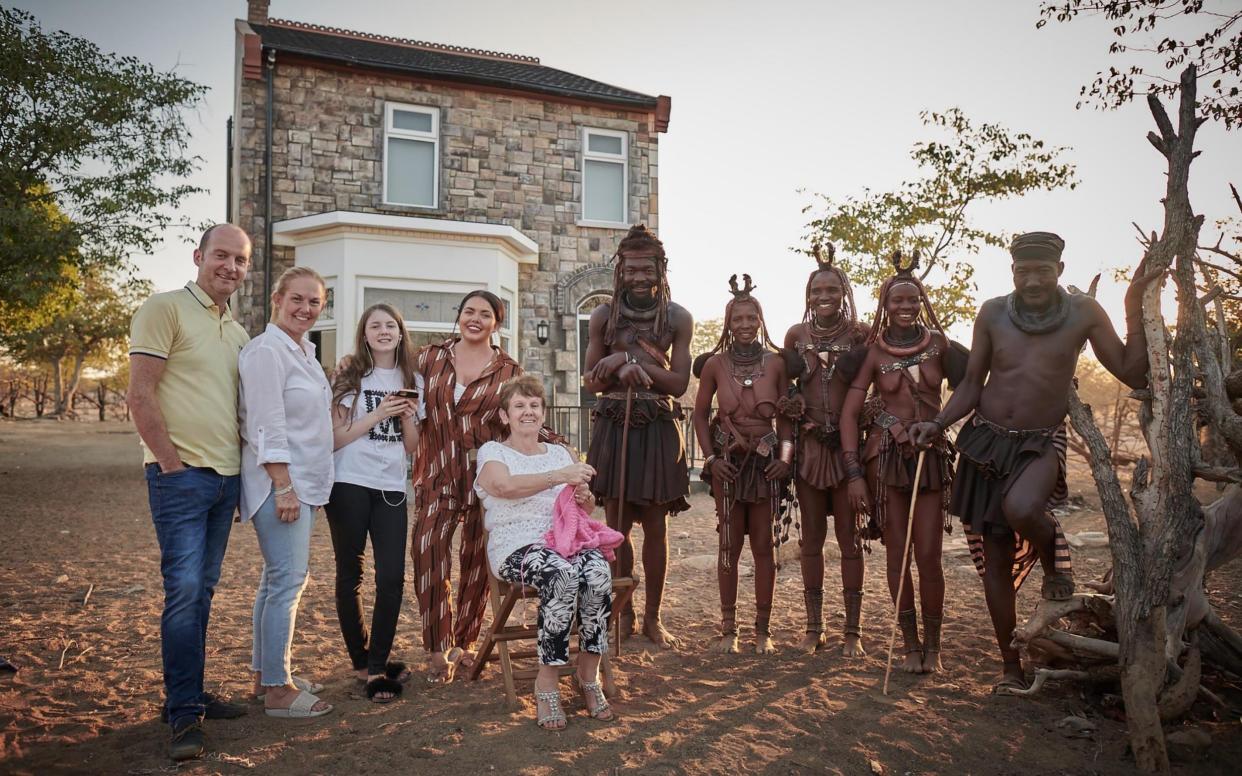The British Tribe Next Door episode 1 review - a televisual take on Ebony and Ivory with the Gogglebox Moffatts

Anticipation for The British Tribe Next Door (Channel 4) has not been feverish. The premise for the four-part series sounded downright peculiar from the moment it was announced: taking Gogglebox family the Moffatts (headed by 2016’s I’m a Celebrity winner Scarlett) to northern Namibia where their terraced house in Bishop Auckland would be painstakingly reassembled in Otjeme village, home to some 100 nomadic Himba cattle herders. Accusations of cultural appropriation, post-colonial arrogance and an us-vs-them attitude surfaced almost immediately after the series was announced and, in the wake of Comic Relief’s overdue pledge to ditch its anachronistic “white saviour” films, it felt ill-judged at best.
The introductory voiceover of last night’s opener augured ill, suggesting that the Himba and the Moffatts were going to be “exploring together what it means to be human and discovering what really matters”. This televisual take on Ebony and Ivory might have been more convincing if the Himba and their traditions hadn’t taken centre stage only insofar as they related to the Moffatts and their Journey.
This was no slur on the Moffatts, who engaged with the project with open minds and hearts. Equally, it would be no less patronising to assume the Himba were unenthusiastic or exploited participants in this series. They were unarguably treated with respect, while the Moffatts tended to be the butt of the joke far more frequently, barring an awkward moment when a Himba elder mused that their two-storey house would likely be eaten by termites.

But the cute title and all the good intentions in the world couldn’t mask the fact that – on the basis of the opening episode at least – this was all about the Moffatts addressing their own issues of materialism, consumption and sustainability. Scarlett, as the highest profile Moffatt, was bombarded with a procession of life lessons. She was embarrassed by the number of shoes she owned (just a few of the 20,000 possessions filling their reconstructed house). A long walk to dig a well prompted her to declare, “I’ll never take water for granted again.” And she considered her self-consciousness and body-image issues after declining to adopt the traditional garb of Himba women.
Time after time, the Himba acted as foils for the Moffatts’ voyage of self-discovery. Will Millard’s My Year with the Tribe, a fascinating and frank meta-documentary from last year about the impact of this sort of anthropological filmmaking-cum-social experiment on indigenous communities, covered this ground much more fruitfully and intelligently. The British Tribe Next Door felt like an expensive and rather redundant throwback.

